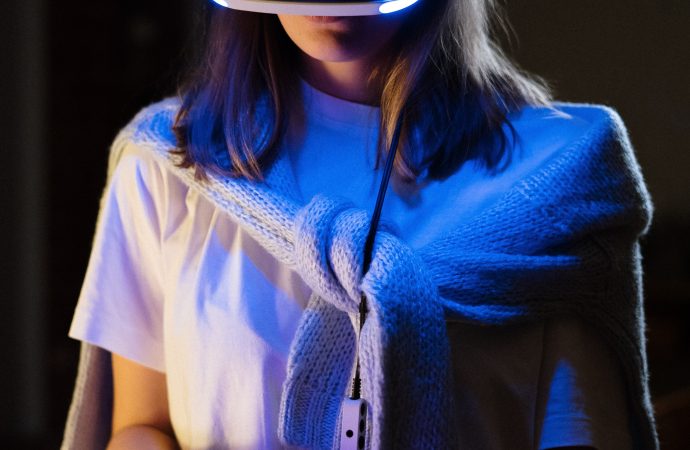Bridging Realities: The Rise of Generative AI in VR Introduction Hello, I am Fred. I am passionate about exploring the latest trends and innovations in technology, especially in the fields of virtual reality (VR) and augmented reality (AR). In this article, I will share with you some of the exciting developments and applications of generative
Bridging Realities: The Rise of Generative AI in VR
Introduction
Hello, I am Fred. I am passionate about exploring the latest trends and innovations in technology, especially in the fields of virtual reality (VR) and augmented reality (AR). In this article, I will share with you some of the exciting developments and applications of generative AI in VR, and how it is bridging the gap between simulation and reality.
What is Generative AI?
Generative AI is a branch of artificial intelligence that focuses on creating new content or data from existing data, such as images, text, audio, or video. Generative Artificial Intelligence uses techniques such as deep learning, neural networks, and generative adversarial networks (GANs) to learn from data and generate realistic and novel outputs.
Why is Generative AI Important for VR?
VR is a technology that simulates a three-dimensional environment that users can interact with using special devices such as headsets, controllers, or gloves. VR aims to create a sensory experience for the user, sometimes including sight, touch, hearing, smell, or even taste. VR has many applications in gaming, entertainment, education, training, healthcare, and research.
However, creating high-quality VR content is challenging and costly, as it requires a lot of time, resources, and expertise. Moreover, VR content is often limited by the availability and quality of data, such as 3D models, textures, sounds, and animations. This is where generative AI can help, by enabling the creation of more realistic and immersive VR content in less time and for less costs.
How is Generative AI Used in VR?
Generative AI can be used in VR for various purposes, such as:
- Procedural content generation: This is the process of creating VR content automatically or semi-automatically using algorithms and rules. For example, generative artificial intelligence can create entire worlds, characters, and even narratives that can interact with users in real time, creating a more personalized and engaging experience.
- Image synthesis and enhancement: This is the process of creating or improving images using generative AI models. For example, generative artificial intelligence can create photorealistic images from sketches, text, or low-resolution images, or enhance the quality and resolution of existing images.
- Audio synthesis and enhancement: This is the process of creating or improving audio using generative AI models. For example, generative artificial intelligence can create realistic sounds and voices from text, or enhance the quality and clarity of existing sounds and voices.
- Haptic feedback generation: This is the process of creating tactile sensations using generative AI models. For example, generative artificial intelligence can create realistic vibrations, forces, and textures that correspond to the VR environment and objects, enhancing the immersion and realism of the VR experience.
What are the Benefits of Generative AI for VR?
Generative AI can offer many benefits for VR, such as:
- Increased realism and immersion: Generative artificial intelligence can create VR content that is more realistic and immersive, as it can capture the details, variations, and physics of the real world. This can enhance the user’s sense of presence and involvement in the VR environment, as well as reduce the risk of motion sickness and cybersickness.
- Reduced development time and costs: Generative artificial intelligence can reduce the time and costs of creating VR content, as it can automate or simplify the tasks of modeling, texturing, animating, and rendering. This can enable more developers and creators to produce VR content, as well as increase the diversity and quality of VR content available.
- Improved user experience and satisfaction: Generative artificial intelligence can improve the user experience and satisfaction in VR, as it can offer more personalized and adaptive VR content that responds to the user’s preferences, actions, and emotions. This can increase the user’s engagement, enjoyment, and retention in VR, as well as foster a sense of agency and ownership.

Image by jcomp on Freepik
What are the Challenges and Limitations of Generative AI for VR?
Generative AI also faces some challenges and limitations for VR, such as:
- Data availability and quality: Generative AI relies on large and diverse datasets to train and evaluate its models, which may not be always available or accessible for VR. Moreover, the quality and accuracy of the data may affect the quality and accuracy of the generative AI outputs, which may lead to errors, artifacts, or inconsistencies in the VR content.
- Computational complexity and efficiency: Generative AI models are often computationally complex and intensive, which may pose challenges for VR devices and platforms, especially for mobile and standalone VR devices. Moreover, the efficiency and speed of the generative AI models may affect the performance and responsiveness of the VR content, which may impact the user experience and satisfaction.
- Ethical and social implications: Generative AI may raise some ethical and social issues for VR, such as privacy, security, ownership, authenticity, and responsibility. For example, generative AI may create VR content that is misleading, deceptive, or harmful, such as deepfakes, fake news, or propaganda. Moreover, generative AI may create VR content that is biased, discriminatory, or offensive, such as stereotypes, prejudices, or hate speech.
Conclusion
Generative AI is a powerful and promising technology that can transform the VR gaming industry and create immersive and realistic experiences for gamers and researchers. However, generative AI also poses some challenges and limitations that need to be addressed and overcome. As generative AI and VR continue to evolve and advance, we can expect to see more innovative and exciting applications and implications of this technology in the future.

















Leave a Comment
Your email address will not be published. Required fields are marked with *